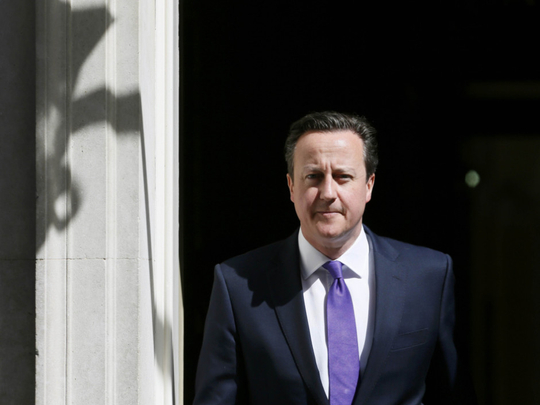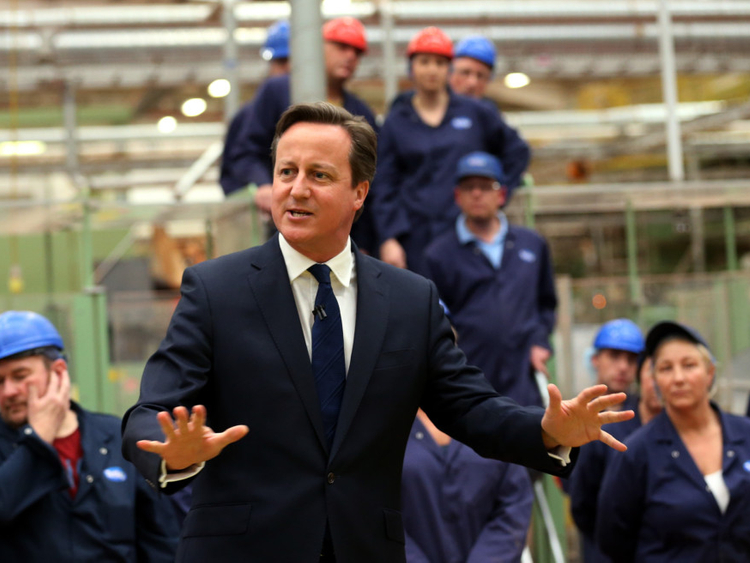
The new Conservative United Kingdom government is preparing its so-called Queen’s Speech of legislative measures ahead of their unveiling in parliament on May 27. One of the key measures will be a bill to approve an ‘in-out’ European Union (EU) referendum that will ensure Prime Minister David Cameron has the option of holding such a plebiscite as early as next year.
The fact that Cameron is reportedly keen to hold a referendum sooner rather than later, in order to avoid a clash with the French and German national elections in 2017, underlines that he will be looking to complete his re-negotiations over the UK’s EU membership terms by 2016. He is seeking concessions from Brussels in several areas including: Strengthening controls on benefits for EU migrants; securing a British opt-out from the EU mission of “ever closer union”; getting greater powers for the UK parliament to block EU legislation; and protections to ensure changes in the European single market cannot be imposed on Britain, as a non-Eurozone member.
The upcoming preparations for a EU referendum underline the dramatic change in UK politics since last week’s remarkable general election. Defying many pre-election polls, the Conservatives emerged as a majority administration, the first time an incumbent party gained seats for more than 30 years — since Margaret Thatcher’s second victory in 1983.
Perhaps the most important implication of Cameron’s victory for UK foreign policy is the ‘in-out’ EU referendum. Given that polls show up to half of the UK populace is opposed to continued membership of the EU, this could see Britain exiting.
This would be opposed by many, including much of the UK business community. And it could now have a chilling effect on global inward investment decisions by internationally-headquartered firms basing themselves in Britain as a hub within the EU.
The sea change in British politics since last week is not just reflected in the Tory’s spectacular victory. In addition, the Scottish Nationalist Party (SNP) has almost wiped out all other parties in Scotland, undermining Labour’s previous dominance of Westminster contests there.
The immediate post-election moment of both the Tories and SNP has also been heightened by the fact that Labour and Liberal Democratic Leaders Ed Miliband and Nick Clegg have stood down. Both parties now face internal leadership contests in the coming weeks that may result in much introspection.
Last week’s result for the Tories is very similar to that of 1992 when John Major, again unexpectedly, won a small overall Conservative majority (albeit slightly larger than the one Cameron has won last week). The comparison with 1992 is instructive for the future prospects of the Cameron government in as much as the majority of Major’s administration was slowly whittled down through factors such as by-elections and defections. The government eventually lost its parliamentary majority in December 1996, but survived as a minority administration until the May 1997 general election when Tony Blair won by a landslide.
While Cameron now appears in a strong position, he will be aware that — even with a small majority — it could be precarious to govern over a full five-year term, especially with several big challenges on the horizon. This is also underlined by the Harold Wilson-Jim Callaghan Labour Government in the 1970s. In October 1974, Labour won the election with an outright majority, but over time, this eroded. In 1977, with a now minority government, the then prime minister Callaghan negotiated the so-called ‘Lib-Lab’ pact, which secured the support of Liberals on votes of no-confidence. This sustained the administration until the pact ended in 1978, during a period when Labour was facing significant opposition, including intraparty, to public spending reductions to help pay for the 1976 International Monetary Fund loan. Ultimately, the Labour government lost in 1979 to Thatcher’s resurgent Conservatives.
In this context, the new government could potentially survive for a full term. However, Cameron may well lose his parliamentary majority, and could ultimately need to seek a so-called ‘supply and confidence’ deal with one or more parties – akin to that agreed between Labour and Liberals in the 1970s. The latter arrangement occurs when one or more other parties agree to support the government in motions of confidence and potentially also budget/appropriation votes by voting in favour or abstaining, but do not formally join the government.
Aside from the unexpected success of the Conservatives, a dominant theme of this year’s election campaign has been the absence of third-party alternatives other than the Liberal Democrats. The SNP had an especially good night increasing the number of seats they hold in Scotland massively from the six they held before.
This now makes the party a major player in Westminster. This could not just have profound implications for the balance of power in Westminster, but also the territorial integrity on the UK in future years, and a second Scottish independence referendum cannot be ruled out, which could prove a major headache for the Conservatives.
A second referendum would be especially likely if the UK does vote to leave the EU. The Scots are disproportionately in favour of continued British membership and this issue could easily be championed by the SNP in future years as a reason why Scotland should break away from the UK and become an independent state within the EU.
In this context, it is widely expected that Cameron may make a major announcement on Scotland in the coming days that may go beyond the existing transfer of powers promised after last year’s Scottish independence referendum. He has already pledged post-election to “bring our country together” and “govern for everyone in our United Kingdom”.
Taken overall, the UK election result has yielded a remarkable outcome. While the government’s majority may be whittled away, it could remain in power for a full term and this will have key policy implications, including an ‘in-out’ EU referendum in 2016 or 2017 which could see Britain choose to exit and, in turn, prove to be a catalyst for a second Scottish referendum.
Andrew Hammond is an Associate at LSE Ideas (the Centre for International Affairs, Diplomacy and Strategy) at the London School of Economics and a former UK Government special adviser












